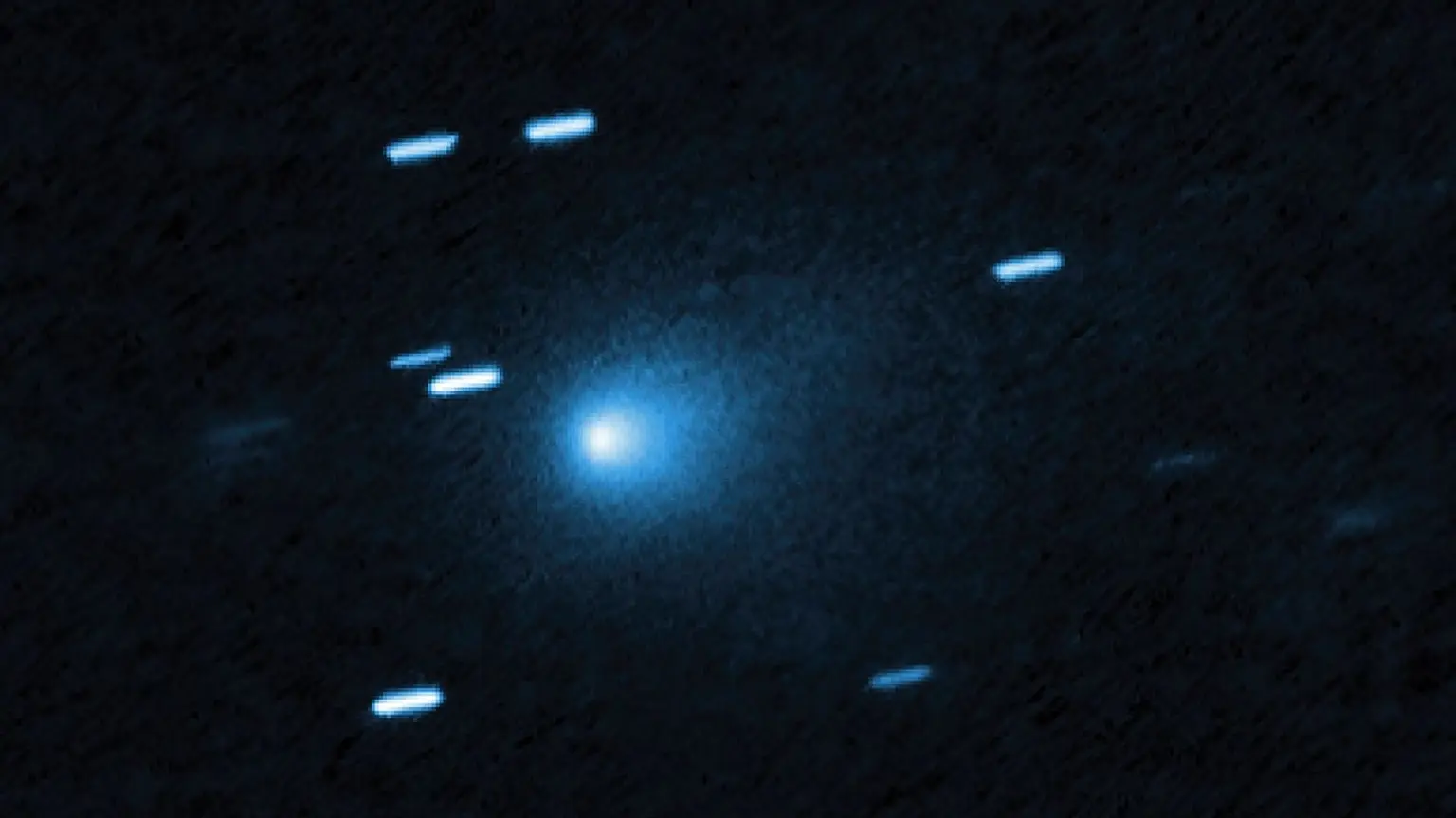Mysterious 3I/ATLAS object leads NASA and Harvard to take unprecedented action in space
-
 Hubble captured this image of the interstellar comet 3I/ATLAS on July 21, 2025, when the comet was 277 million miles from Earth. Hubble shows that the comet has a teardrop-shaped cocoon of dust coming off its solid, icy nucleus.
Hubble captured this image of the interstellar comet 3I/ATLAS on July 21, 2025, when the comet was 277 million miles from Earth. Hubble shows that the comet has a teardrop-shaped cocoon of dust coming off its solid, icy nucleus.A mysterious interstellar object known as 3I/ATLAS has prompted NASA and Harvard University to initiate one of the most extraordinary cooperative monitoring operations in modern space history, as reported by El Adelantado. The joint effort, which involves agencies across the International Asteroid Warning Network (IAWN), was discreetly activated after the comet began exhibiting behavior scientists described as “inexplicable.”
Discovered in July 2025 by the NASA-funded ATLAS telescope in Chile, 3I/ATLAS is the third interstellar object ever identified passing through our solar system. It appears to have come from a completely different star system, traveling at speeds exceeding 209,000 km/h on a hyperbolic trajectory that will eventually send it back into deep space.
NASA and Harvard’s unprecedented response to 3I/ATLAS
The quiet but sweeping international alert surrounding 3I/ATLAS began on October 21, 2025, when Harvard’s Minor Planet Center issued bulletin MPEC 2025-U142. The notice marked the activation of a global space safety protocol under the IAWN, directing international observatories to focus on the comet until January 27, 2026. Although NASA confirmed that Earth is not in danger, the object’s unpredictable motion and unique physical features have raised scientific—and political—interest.
“The object is most likely a natural comet, but its anomalies imply that we must consider a technological origin because of the large implications to humanity in that case,” explained Harvard astrophysicist Avi Loeb (as per NY Post).
Loeb, who first suggested that the interstellar traveler ʻOumuamua might have been artificial, described 3I/ATLAS as potentially a “black swan event”—a rare, unpredictable phenomenon with civilization-altering potential.
“We must remain open-minded. It’s at least a thousand times more massive than the previous interstellar objects we’ve seen,” he said.
NASA’s James Webb Space Telescope, Hubble, and several other observatories—including TESS, Swift, Lucy, and Parker Solar Probe—have been tasked with monitoring the object. Even amid a U.S. government shutdown, NASA confirmed that “essential personnel” continue tracking 3I/ATLAS due to its significance. Congress has also taken notice. Rep. Anna Paulina Luna (R-Fla.) recently called on NASA to release unreleased imagery and data about the object, writing that “this information is of great importance to advancing our understanding of interstellar visitors.” Sources within NASA and the Pentagon confirmed plans to brief lawmakers about the ongoing investigation, despite normal operations being paused.
What exactly is 3I/ATLAS?
To the untrained eye, 3I/ATLAS might appear to be just another comet, but astronomers quickly realized it was anything but ordinary. Its hyperbolic orbit confirms that it originated beyond our solar system, and its Manhattan-sized nucleus—approximately 5 kilometers in diameter—places it among the largest interstellar objects ever observed. The comet’s most striking feature is its “anti-tail”—a bizarre plume of dust and particles that points toward the Sun instead of away from it. This reversal defies normal cometary behavior, which typically results from solar radiation pushing material outward. Compounding the mystery is the comet’s non-gravitational acceleration, believed to be caused by uneven jets of gas and dust that act like thrusters, sending it veering slightly off expected paths.
NASA’s Webb Telescope also detected nickel emissions without any iron, a composition never seen in natural comets. Loeb noted that this particular form of nickel—nickel tetracarbonyl—has only ever been observed in human manufacturing processes, further deepening the enigma. Despite the growing intrigue, NASA maintains that 3I/ATLAS poses no threat to Earth. It will pass no closer than 270 million kilometers from our planet—roughly 1.8 times the distance between Earth and the Sun. Still, the object’s unusual characteristics have prompted agencies to use it as a “natural laboratory” to test methods for tracking and analyzing future interstellar visitors.
“The more we learn about 3I/ATLAS, the better we’ll understand how interstellar material moves through our solar system—and how to respond to it safely,” said a NASA spokesperson.
For now, Earth remains safe—but the lessons gleaned from 3I/ATLAS will likely shape our planetary defense and interstellar research strategies for decades to come.
TOPICS: 3I/ATLAS
- YouTube removes AI-generated 3I/ATLAS videos impersonating Harvard Professor Avi Loeb
- New analysis presents unusual features documented in the 3I/ATLAS trajectory and activity
- Periodic light variability in interstellar object 3I/ATLAS linked to jet activity
- What we know so far about 3I/ATLAS: Everything understood to date